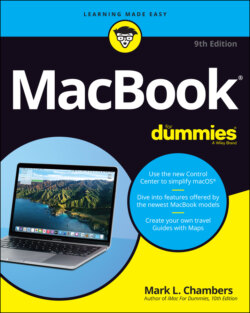Читать книгу MacBook For Dummies - Mark L. Chambers - Страница 33
Unpacking for the road warrior
ОглавлениеFollow these guidelines when unpacking your system:
Check for damage. I’ve never had a box arrive from Apple with shipping damage, but I’ve heard horror stories from others (who claim that King Kong must have been working for That Shipping Company). Check all sides of the box before you open it. If you find significant damage, take a photograph (just in case).
Search for all the parts. When you’re removing those chunks o’ foam, make certain that you’ve checked all sides of each foam block for parts snuggled therein or taped for shipment.
Keep all packing materials. Do not put the box and packing materials in the trash. Keep the box and all packing materials for at least a year, until the standard Apple warranty runs out. If you have to ship your laptop to an Apple service center, the box and the original packing are the only way for your machine to fly.And now, a dramatic Mark’s Maxim about cardboard containers: Smart computer owners keep their boxes far longer than a year. If you sell your laptop or move across the country, for example, you’ll want that box. Trust me on this one.™
Store the invoice for safekeeping. Your invoice is a valuable piece of paper. Save your original invoice in a plastic bag, along with your computer’s manuals, original software, and other assorted hoo-hah. Keep the bag on a shelf or stored safely in your desk, and enjoy a little peace of mind.
Read the Mac’s manual. “Hey, wait a minute, Mark. Why do I have to read the manual from Apple along with this tome?” Good question, and here’s the answer: The documentation from Apple may contain new and updated instructions that override what I tell you here. (Say, “Never cut the red wire. Cut the blue wire instead.” Or something to that effect.) Besides, Apple manuals are rarely thicker than a restaurant menu. You can always download the latest updated manuals for Apple computers in electronic format from Apple’s website. (Adobe’s PDF format is the standard for reading documents on your computer. You can open and display any PDF document in Big Sur by using the Preview application or the Quick Look feature.) I always keep a copy of the PDF manual for my MacBook Air on my internal drive, just in case.
